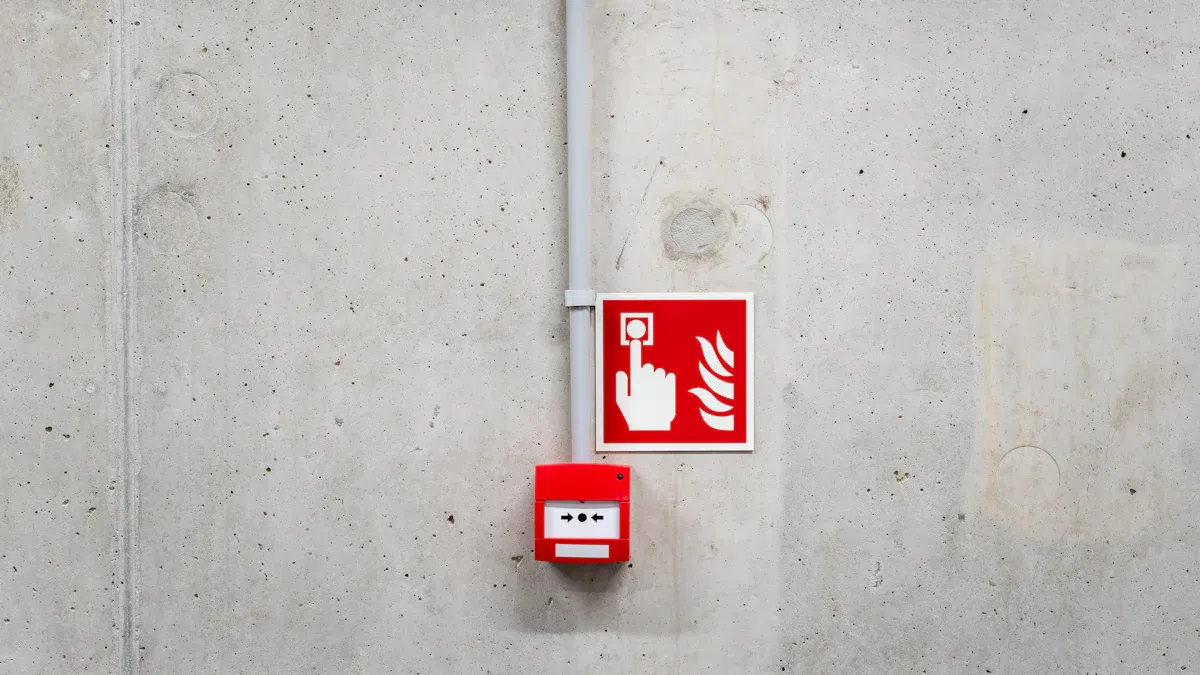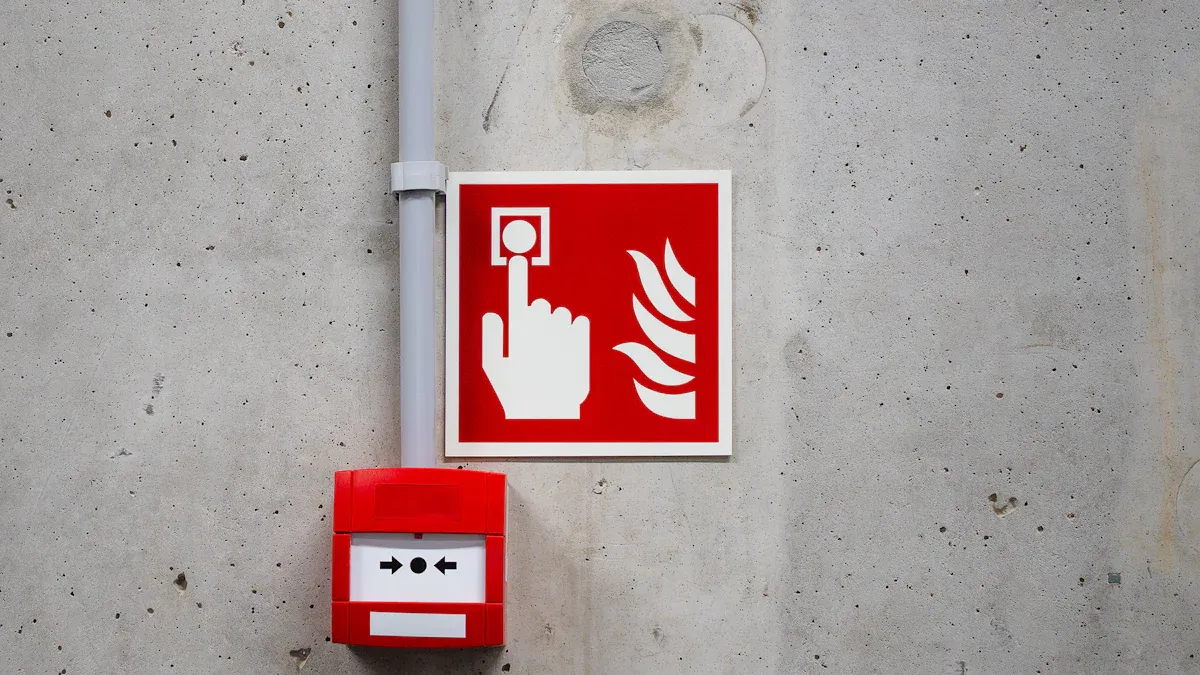
Fire emergencies require dependable communication to protect lives. Emergency Voice Communication Systems Fire Telephone, such as Joiwo’s JWAT162-2, provide direct and secure links between responders and control rooms. Their importance becomes paramount when public security telephone networks falter during critical situations. Research indicates that over 70% of fire-related calls are classified as high priority, emphasizing the necessity of uninterrupted communication for managing الهاتف الأمني SOS operations efficiently.
Understanding Fire Telephones and Their Purpose

What Are Fire Telephones?
Fire telephones are specialized communication devices designed for emergencies. They provide a direct and secure line between emergency responders and control rooms. Unlike regular phones, these devices are built to function reliably in extreme conditions, such as during fires or other disasters. Their robust design ensures they remain operational when other communication systems fail.
The concept of emergency communication systems dates back to the 1870s when local telephone exchanges were first established. These early systems laid the groundwork for modern emergency communication. By 1953, AT&T introduced the Emergency Reporting Telephone System (ERTS), which featured dedicated call boxes for public use. This innovation marked a significant step forward in emergency preparedness.
| السنة | Development | الأهمية |
|---|---|---|
| 1870s | Local telephone exchanges established | Foundation for emergency communication systems |
| 1953 | AT&T develops Emergency Reporting Telephone System (ERTS) | Introduction of dedicated emergency call boxes for public use |
The Role of Fire Telephones in Emergency Voice Communication Systems
Fire telephones play a critical role in Emergency Voice Communication Systems Fire Telephone setups. They ensure immediate access to emergency services, which is vital during crises. These devices are particularly useful in high-rise buildings, large facilities, and areas where mobile networks may fail. Their visible presence also acts as a deterrent to crime, enhancing overall safety.
- Provide immediate access to emergency services
- Useful for incidents beyond fires, such as medical emergencies
- Deter crime through visible security measures
The JWAT162-2 Fire Telephone by Joiwo exemplifies the importance of these systems. Its durable design and reliable communication capabilities make it an essential tool for emergency preparedness. By facilitating seamless communication, fire telephones help responders coordinate effectively, saving lives and minimizing damage.
Key Features of Emergency Voice Communication Systems Fire Telephone
Reliability and Durability in Challenging Conditions
Emergency situations demand equipment that can withstand harsh environments. Fire telephones, like Joiwo’s JWAT162-2, are built to perform under extreme conditions. These devices feature rugged designs, such as red cold-rolled or stainless steel finishes, ensuring they remain operational even in high temperatures or heavy smoke. With an IP65 waterproof rating and the ability to function in temperatures ranging from -5ºC to +40ºC, they are reliable in diverse settings.
The JWAT162-2 also includes a secure push door to protect the handset, ensuring it stays functional when needed most. This durability makes it a dependable choice for fire stations, stadiums, and other critical locations.
Direct and Secure Communication Channels
Fire telephones provide a direct line of communication between responders and control rooms, eliminating delays caused by network failures. Unlike mobile phones, these systems use fixed, bi-directional, full-duplex communication, ensuring clear and uninterrupted conversations.
To enhance security, fire telephones implement protocols like Managed Facility Voice Networks (MFVN), which transmit signals without alteration. This compliance with NFPA 72 fire codes ensures reliability and safety. Compared to alternatives like cellular communicators or POTS lines, MFVN offers unmatched stability during emergencies.
| Protocol Type | Advantages | Compliance with Fire Codes |
|---|---|---|
| Managed Facility Voice Network | Transmits fire alarm signals unchanged | Yes (NFPA 72) |
| Network/Cellular Communicator | Provides primary and backup methods | Yes (NFPA 72) |
| POTS Lines | Traditional but slower and outdated | Yes (but being phased out) |
Integration with Emergency Systems for Seamless Coordination
Modern Emergency Voice Communication Systems Fire Telephone setups integrate seamlessly with other emergency systems. For instance, the JWAT162-2 supports features like auto-dialing and compatibility with control room systems, enabling quick coordination. Advanced systems also include multiple DVC Audio Command Centers and local or remote microphone paging options, ensuring communication across large facilities.
| Feature | Description |
|---|---|
| 8 channels of digital audio | Allows simultaneous messaging during emergencies |
| 5 channels of firefighter telephones | Enables two-way communication |
| Up to 32 minutes of message storage | Provides ample time for critical updates |
| Control of up to 48 remote telephone jacks | Supports extensive communication needs |
These integrations simplify emergency response, helping teams act faster and more effectively.
How Fire Telephones Operate During Emergencies

Activation and Usage in Fire Scenarios
Fire telephones are designed for quick and straightforward activation during emergencies. When a fire breaks out, responders or building occupants can access these devices by opening the secure push door. The rugged handset inside is ready for immediate use. Many models, like the Joiwo JWAT162-2, feature an auto-dial function. This allows users to connect directly to the control room without dialing a number, saving precious seconds.
Once activated, the fire telephone establishes a secure, two-way communication channel. This ensures responders can relay critical updates to the control room while receiving instructions in real time. The full-duplex voice communication system eliminates delays, making it easier to coordinate evacuation efforts or firefighting strategies. These devices are especially vital in high-rise buildings or large facilities where traditional communication methods may fail.
Real-Life Applications of Joiwo JWAT162-2 Fire Telephone
The Joiwo JWAT162-2 Fire Telephone has proven its value in various real-world scenarios. In high-rise buildings, it serves as a lifeline for firefighters navigating smoke-filled stairwells. Its durable design ensures it remains operational even in extreme heat or humidity. At stadiums, the device helps security teams manage large crowds during emergencies, ensuring swift communication with the control room.
Natural gas stations also benefit from the JWAT162-2. Its IP65 waterproof rating and robust construction make it ideal for outdoor environments. Emergency Voice Communication Systems Fire Telephone setups featuring this model have been praised for their reliability and ease of use. By providing a dependable communication link, the JWAT162-2 helps save lives and minimize property damage during critical situations.
Benefits of Fire Telephones Over Other Communication Methods
Enhanced Reliability Compared to Mobile Phones
Fire telephones outperform mobile phones in emergencies. Mobile networks often become unreliable during disasters due to congestion or infrastructure damage. Fire telephones, on the other hand, operate on dedicated systems designed to withstand extreme conditions. Their fixed, secure connections ensure uninterrupted communication when it matters most.
The Joiwo JWAT162-2, for example, is built to function in harsh environments. Its rugged design and IP65 waterproof rating make it dependable even in high temperatures or heavy smoke. Unlike mobile phones, which rely on signal towers, fire telephones provide a direct line to the control room, ensuring critical updates are never delayed.
Tip: Always ensure fire telephones are installed in accessible locations for quick use during emergencies.
Dedicated Emergency Communication Lines
Dedicated lines in fire telephones eliminate the risks associated with shared networks. These lines prioritize emergency calls, ensuring responders and control rooms can communicate without interference. This setup is crucial for effective decision-making and coordination.
- Emergency calls play a vital role in saving lives.
- Operators rely on clear information to assess situations accurately.
- Miscommunication or ambiguity can hinder response efforts.
- Dedicated lines foster smooth cooperation between callers and operators.
By providing a secure and exclusive channel, fire telephones like the JWAT162-2 enhance the efficiency of emergency responses.
Reduced Risk of Miscommunication in High-Stress Situations
High-stress situations often lead to miscommunication. Fire telephones minimize this risk by offering clear, full-duplex voice communication. This feature allows both parties to speak and listen simultaneously, ensuring no critical details are missed.
In chaotic scenarios, mobile phones may fail due to poor signal or background noise. Fire telephones, with their noise-resistant designs, ensure messages are conveyed accurately. This reliability helps responders act swiftly, reducing the chances of errors and saving lives.
Fire telephones, like the Joiwo JWAT162-2, are essential for emergency communication. Their durability and secure lines ensure responders stay connected when it matters most.
“When we are managing critical incidents, it all starts with communication, and success is dependent on maintaining a reliable communication system through the chaos.” – Chief Brian Schaeffer
| Incident Description | Benefit of Fire Telephones |
|---|---|
| East Troublesome Fire response | Enhanced communication when systems failed. |
| Del Oro Water Company during Camp Fire | Restored connectivity to ensure safety. |
Organizations should prioritize these systems to improve safety and preparedness.
FAQ
1. What makes fire telephones different from regular phones?
Fire telephones are built for emergencies. They offer secure, direct communication and withstand extreme conditions like heat, smoke, or water. Regular phones can’t handle such challenges.
Tip: Fire telephones are essential in high-stress environments where reliability is critical.
2. Where should fire telephones be installed?
Install them in accessible locations like stairwells, control rooms, or near exits. These spots ensure quick access during emergencies, especially in high-rise buildings or large facilities.
3. Can fire telephones work without electricity?
Yes! Many fire telephones, like the Joiwo JWAT162-2, operate on independent power systems. This ensures they remain functional even during power outages or infrastructure failures.
Note: Always test fire telephones regularly to ensure they’re operational when needed.


